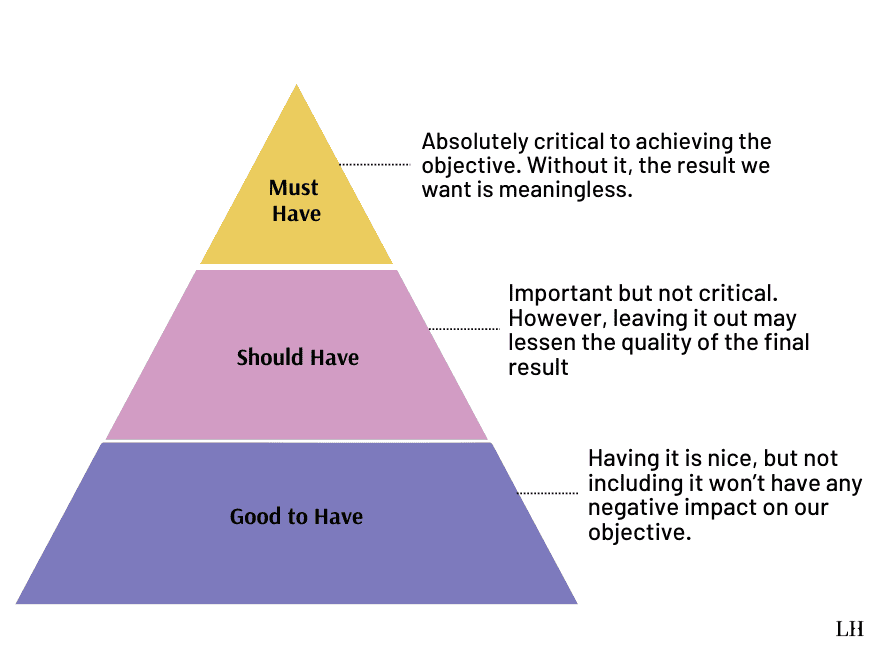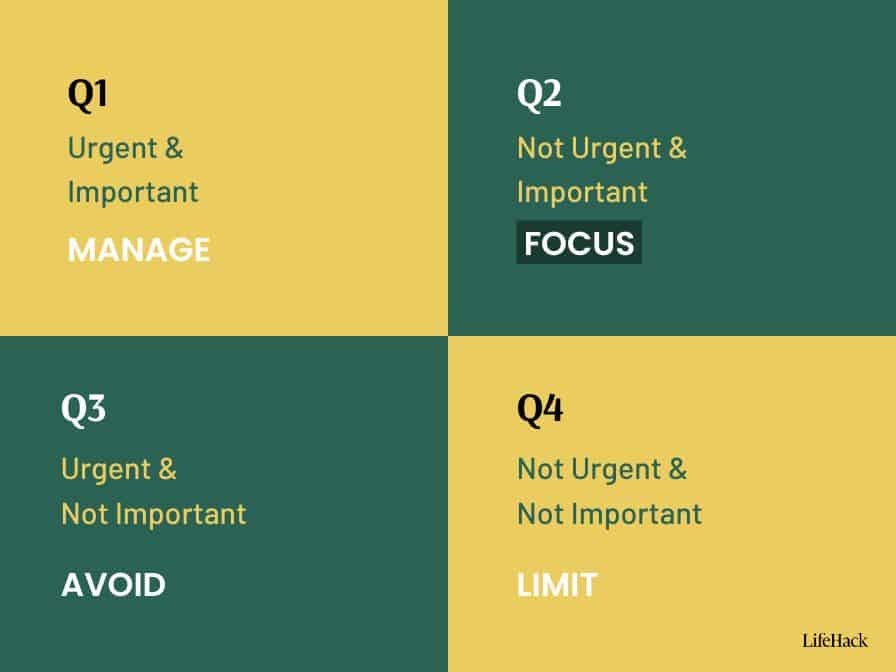Life can often feel like an intense, high-stakes game of chess where you’re facing multiple opponents simultaneously. Each piece on the board represents a task, an obligation, or a responsibility, all clamoring for your attention, all presenting as equally important and urgent. Just like the chess player who can’t move all pieces at once, you find yourself divided, bouncing from one task to another, diluting your focus, and ultimately feeling overwhelmed or losing motivation….
Whether it’s a high-pressure day at the office with a pending presentation, a bombardment of emails, and a meeting that needs your planning expertise, or a day at home with a kitchen to clean, laundry to wash, and a family dinner to prepare— these situations are universal. We’ve all been there, tangled in the hustle, striving to accomplish everything at once and ending up with a performance that falls short of our expectations.
Yet, there’s a silver lining amidst this tumultuous storm. There’s a way to maneuver around this chaos — smart prioritization. The answer isn’t to hustle harder in the game, it’s about strategizing your moves wisely.
In this article, we’re set to explore a distinctive LifeHack method, a game plan to help you make sense of your complex chessboard of tasks. It’s not about making every possible move, but about recognizing the critical ones, the moves that will effectively drive your game forward.
Ready to transform your approach and master the game of smart prioritization? It’s your move.
How to Prioritize Smartly
At the heart of it all, prioritizing is just another way of saying, “Here’s where I choose to direct my focus.” Because, let’s face it, wherever you place your attention is where you’ll pour your time and energy. A common misconception is that we struggle with knowing how to prioritize. This, however, is not quite accurate.
Believe it or not, we are continually prioritizing, even without fully realizing it. If we didn’t, we’d be at a loss when it comes to deciding our next move. Our daily life, filled with a barrage of demands, drives us to develop patterns and routines as coping mechanisms. These ingrained routines help us make decisions — they’re anchored on specific themes, like “caring for the children” or “getting through the workday”. These themes, set by your mind, cater to needs or desires that might not even be consciously apparent to you.
Each of these themes holds an unspoken set of priorities, shaping your expectations and guiding your actions. However, if you’re not aware of these underlying priorities, your decision-making essentially operates on autopilot. The real task, then, is to bring these hidden priorities into the light of conscious awareness.
The Dual Layers of Priority
We can break down prioritizing functions on two levels:
- High Level: This involves setting your goals, determining where you want to go.
- Low Level: This encompasses deciding on tasks or milestones — outlining what you should do.
Understanding and accepting that both levels are crucial is the first step.
There are those who have a clear vision of their destination, but grapple with determining what steps to take to get there — leaving them stuck in a cycle of procrastination. Conversely, there are others who excel at handling task-level prioritization, but lack clarity about their ultimate direction. This often results in them being overwhelmed by a never-ending list of tasks that doesn’t contribute to their real progress.
The crux of the matter is that high-level and low-level priorities serve different purposes, so they require unique approaches. Confusing the two doesn’t work; it merely muddles the waters. But don’t worry, we’re here to help you navigate these waters with ease.
Mastering High Level Prioritization
High-level priorities come into play when you’re ranking the importance of your goals. We all have a bucket list of significant things we aspire to achieve in life. However, time and energy are finite resources, and it’s a harsh truth that we can’t accomplish everything.
This is where high-level prioritization steps in. Yes, it’s challenging because it involves making choices. But that’s also what makes it clear-cut in terms of action.
The 5/25 Method
The 5/25 rule addresses the issue of having too many goals. It is a tool that can help you prioritize your goals so that you can focus your efforts and succeed.
The 5/25 rule was originally associated with Warren Buffett, however the enormously successful American businessman reportedly denied coining it.[1] Although Buffett may not have invented this rule, it can nevertheless be a helpful tool for reiterating and refining your priorities.
Here’s how the method work:
- Enumerate your top 25 life goals: This isn’t confined to a particular aspect of your life. Your list can encompass personal, professional, or financial goals. Jot them down without any judgment.
- Identify your top 5: From this list, circle the top five goals that resonate the most with you. These should be the ones that stir up passion and have the potential to create the most significant impact on your life.
- Prioritize the top 5: After zeroing in on your top 5 goals, arrange them in order of importance. Now, funnel your time and energy into the top one or two, steering clear of distractions.
- Say no to everything else: This means that you need to resist the lure of activities and commitments that don’t harmonize with your top priorities. Be discerning about where you invest your time and energy. If you struggle to say no, Leo Babauta has some tips for you.
- Review and revise regularly: Life is dynamic, and so are your priorities. Revisiting your priorities periodically allows you to adapt to changes and maintain your focus on what’s truly important.
I also have a few tips to help you adapt the 5/25 Method:
- Carve out a dedicated time slot once a month for this activity. Give yourself ample time — say, an hour — to ponder and reflect on what truly matters to you.
- Set a firm time block, say an hour, during which you must finalize and rank your priorities. It’s all too easy to keep putting it off under the pretense of “needing more time to think.”
- Once you’ve set your priorities, stick to them. Resist the urge to question your decisions. That’s why periodic reviews are essential. You can adjust your priorities during these reviews. Commit to your chosen top 5 goals and align your low-level priorities accordingly.
Devising a Strategy for Low-Level Prioritization
Low-level priorities encompass your operational tasks—how you arrange your milestones, actions, and to-dos. Once your high-level priorities are clear, sketching out your low-level priorities becomes an organized process.
Your goals guide you in distinguishing what’s crucial and what isn’t. This clarity replaces the hesitations, emotional dilemmas, and doubts that typically accompany every action you contemplate. With your goals prioritized, you’ve already resolved these conflicts.
1. Adopt The Superstructure Method
This is a LifeHack-exclusive technique that is about pinpointing what’s vital to achieve your desired outcome, and constructing a ‘superstructure’ around them to foster success. We categorize tasks into 3 groups:
Must-Haves
Must-Haves are your success’s critical components. They’re the absolutely necessary elements you require to achieve your goal. For instance, if your goal is to write a book, your Must-Haves could be time to write, research materials, and a clear outline for your book.
Once your Must-Haves are in place, start crafting your superstructure by including the “should-haves” and “good-to-haves” that will reinforce your success.
Should-Haves
Should-Haves are those things that are strongly advised or deemed important to reach your goal, but they may not be crucial.
Good-to-Haves
Good-to-Haves are things that can augment your success or enrich your experience, though they’re not necessary.
For instance, if you’re aspiring to write a book, a Should-Have might be a writing group or a coach for support and feedback, while a Good-to-Have could be a comfortable writing space or inspiring music to keep you motivated.
Learn more about the Superstructure Method in How to Simplify Decision Making With the Superstructure Method
2. Embrace The Urgent vs. Important Matrix
This is a method that prioritizes tasks based on their urgency and importance levels. The Urgent vs. Important Matrix, popularized by Steven Covey in his book The 7 Habits of Highly Effective People, is also known as the “4 Quadrants” approach.
This matrix is an impactful tool to manage your time and efforts, segregating your tasks based on their urgency and importance. It’s divided into four quadrants, each distinguished by a task’s urgency and importance level.
Quadrant 1: Urgent and Important
Tasks that fall into this quadrant demand immediate attention due to their urgency and importance. They’re vital for achieving your goals or maintaining well-being, and ignoring them could lead to grave consequences. Examples include health emergencies, project deadlines, or crucial meetings.
Quadrant 2: Not Urgent but Important
This quadrant comprises tasks that are important but not urgent, necessitating proactive planning and action. These tasks are pivotal for long-term goals and enhancing life quality. For instance, exercise, personal development, or relationship building fall under this category.
Quadrant 3: Urgent but Not Important
Tasks in this quadrant are distractions or interruptions that divert your attention from meaningful work. They demand immediate attention but do not contribute to long-term goals or well-being. Answering non-urgent emails, attending unproductive meetings, or managing minor crises are examples.
Quadrant 4: Not Urgent and Not Important
Tasks in this quadrant are neither urgent nor important. These activities offer little value and waste time, and should be minimized or eliminated. Surfing the internet, watching TV, or other forms of unproductive entertainment fit here.
The approach here is to prioritize your tasks by concentrating on Quadrants 1 and 2, which contain the most essential and impactful work. To allocate time and energy to these tasks, you might need to delegate or minimize tasks in Quadrants 3 and 4.
Learn the details on how to apply this 4 Quadrants approach in How To Use the Time Management Matrix To Do What Matters
Final Thoughts
Navigating through life’s multitude of tasks can sometimes feel like playing a high-stakes game of chess against multiple opponents. Each task represents a shrewd player vying for your attention, pressuring you to make the next strategic move, all while the clock is relentlessly ticking down. But remember, the essence of chess lies not in responding to every single threat, but in discerning which moves align with your strategy, and which can be tactically overlooked.
In this game, it’s easy to buckle under the pressure and react to the most urgent threats. However, not every move that demands immediate attention serves your strategic plan. Your journey should be about distinguishing the pivotal moves that align with your objectives and focusing your attention on those.
By implementing the above strategies, you’ll be able to approach this game with enhanced clarity and control. These tools equip you to identify your strategic priorities, helping you decide which moves deserve your attention and which ones are mere distractions.
So, step onto life’s grand chessboard, armed with the tools needed to make each move count, one task, one decision, one priority at a time.
Let’s make the next move.
Featured photo credit: Christina @ wocintechchat.com via unsplash.com
Reference
| [1] | ^ | Buffett CNBC: On the “25 things you want to achieve” list |














































